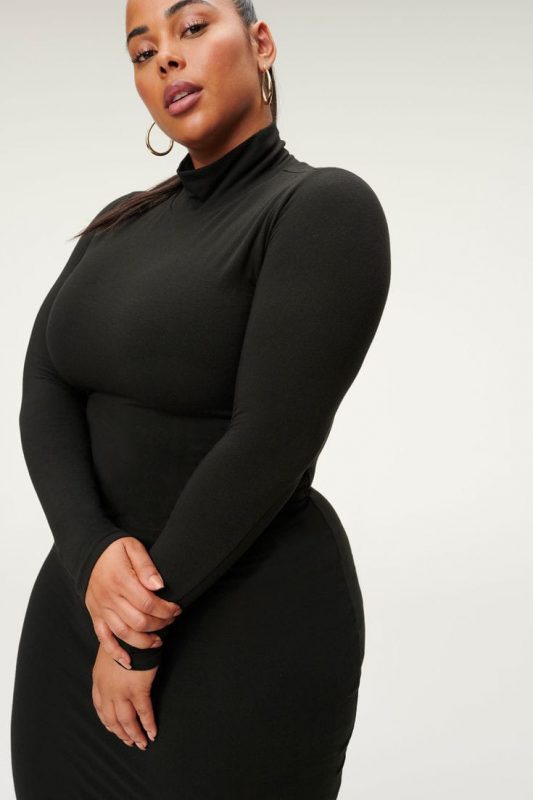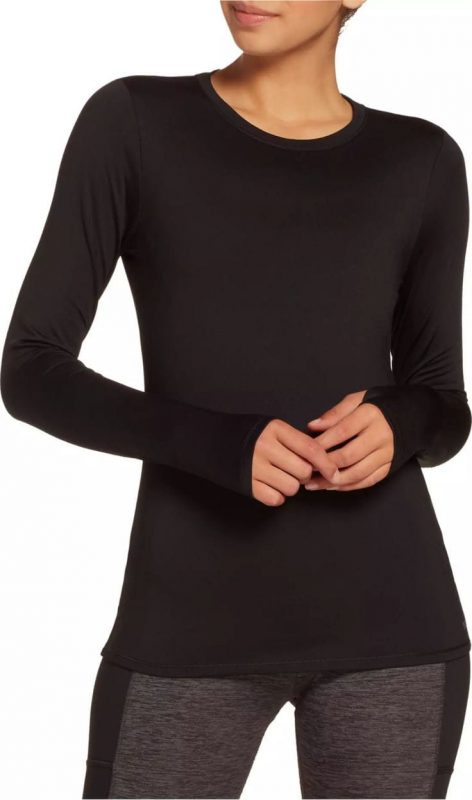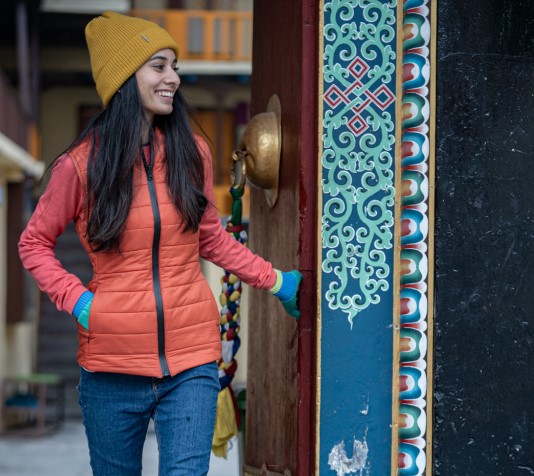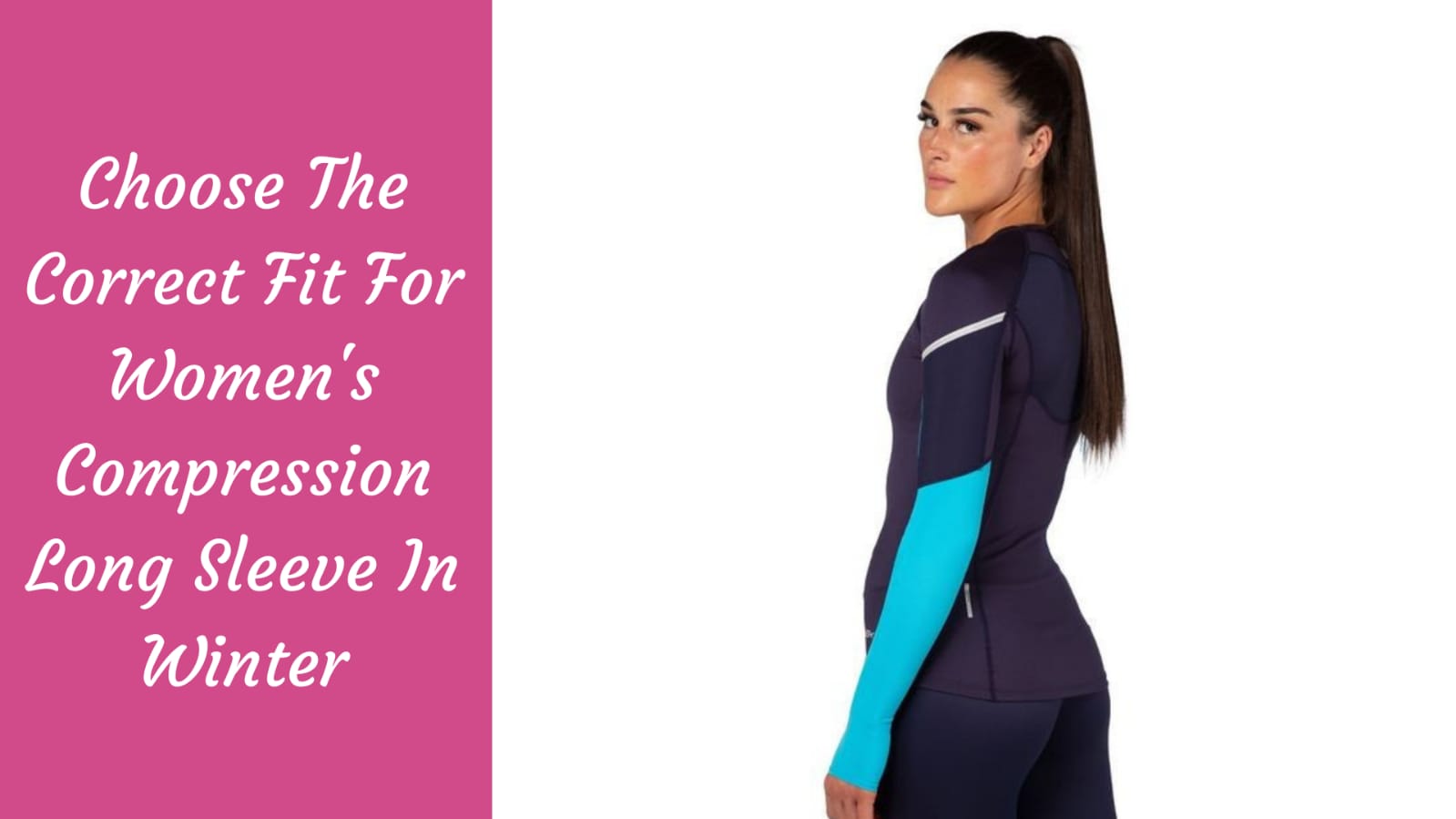
Table of Contents
Choose The Correct Fit For Women’s Compression Long Sleeve In Winter
Compression therapy is beneficial for athletes. It is also helpful to lymphedema patients receiving cancer treatment. Hence, providing detail knowledge on women’s compression long sleeve.
According to studies, employing compression gear is helpful for athletes. They feel less delayed onset muscle soreness (DOMS).
It also helps them to recover more functionality. It’s not necessary to be an athlete to gain medical advantages.
Compression therapy aids in lowering pain and discomfort associated with routine physical exercise.
Wearing thermals can also provide you warmth in cold weather.
Also, lowers leg tiredness from prolonged standing and sitting. Compression can make your legs feel invigorated and light.
It enhances circulation and removes waste products.
What Do Leg and Arm Sleeves Do?
The standard length of arm sleeves is from the wrist to the area above the armpit. They are most utilized after breast cancer surgery.
They use compression sleeves to treat the symptoms of lymphedema.
Leg warmers/sleeves are available in a variety of lengths. They may partially cover the leg or the entire leg, from the ankle to the thigh.
Certain compression sleeves, particularly those constructed of neoprene, serve as braces.
For instance, a knee compression sleeve often simply covers the knee region. In that instance, the sleeve’s function is not to maintain good vascular function. But rather stabilize the joint.
You can wear some compression sleeves throughout the day or at night. Otherwise stated, it’s prudent to assume that you can wear sleeves throughout the day.
What Are Women’s Compression Long Sleeve Used For?
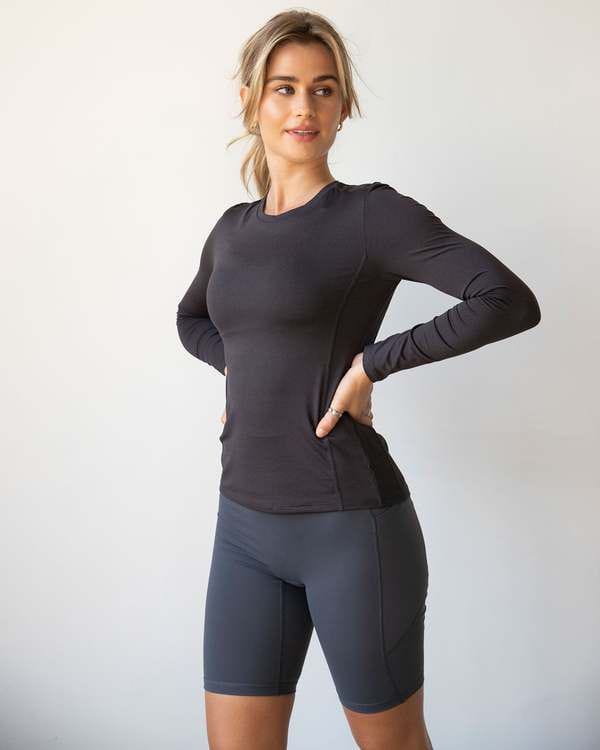
The veins in the arms and lower legs are gently compressed using women’s compression long sleeve. This promotes blood flow from the extremities to the heart.
Also supports the vein walls and vein valves. Age, venous hypertension, or injury causes vascular structures to deteriorate over time. The added help promotes a healthy venous return.
The pressure also removes waste from the surrounding tissue and the arteries. The circulatory system should handle the lymph fluid, lactic acid, and other enzymes.
These enzymes produce swelling in the arms and legs.
Compression can aid fluid flow. This prevents waste products from collecting in the arms or legs. Compression clothing increases blood flow velocity by constricting the veins.
Several leg compression sleeves and socks offer gradual compression. This helps the circulatory system.
Blood and waste materials can sometimes collect in the lower legs and feet due to gravity.
Especially when you stand or sit for an extended period. Gradual compression exerts pressure upwards. This is to aid in the drainage of fluids from this location.
Graduated compression clothing applies a gradient of pressure. With more compression at the ankles and less at the calves.
Do you want support for your lower thigh and calf? Attempt to seek graduated compression when purchasing compression clothing.
What A Women’s Compression Long Sleeve Should Have?
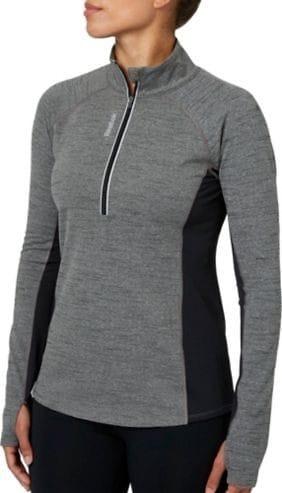
It’s crucial to ensure the fabric consists of breathable materials. Also, it should be easy to clean if someone wants to wear a compression sleeve during hard activity.
For exercise, it is advisable to use high-performance materials like spandex and nylon. Before buying, you can also read the washing directions.
Verify the materials and compression strength of a women’s compression long sleeve before purchasing.
Look for a range of compression on the label that consists of two values measured in mmHg.
You can determine the medical advantages of graded compression from this numerical range.
This is crucial if you intend to use the sleeve to improve your cardiovascular health. Or even reduce swelling and inflammation.
Sleeves that serve as knee braces typically don’t offer progressive compression. It is the same as those intended to lessen knee pain. These foam or neoprene sleeves.
But, provide a smaller covering area with more consistent compression strength.
Materials for Compression Clothing
Each compression garment is different. The following materials are typically used in women’s compression long sleeve.
1. Nylon
One of the key components of compression clothing is nylon. It’s a smooth, silky substance made of plastic and atoms of diamine and dicarboxylic acid.
Strong, lightweight, and easily cleaned nylon prevents shrinkage and makes garments more comfortable.
The most prevalent fabric used in compression gear is nylon. Between 70 and 82 percent of Jomi Compression’s compression knee-highs use nylon.
2. Spandex
The phrase “Spandex” is only used in the United States and is an anagram of the word “expands”.
One of the most elastic materials on the market. Spandex is a thin synthetic fabric renowned for its robust and expansive qualities.
It is often utilized in athletic and athleisure clothing. It also contains the other key element of compression apparel.
As it is one of the primary materials used to produce the compression. The majority of Jomi Compression’s products contain at least 20% spandex.
In clothes, spandex is never used alone; it is always combined with other fabrics.
3. Silicon
Many industrial processes use the chemical element silicon. Compression utilizes it to improve the wearer’s comfort and ease of wear.
Its main application is the support bands. They prevent compression gear from slipping at the top. Some styles of compression socks and stockings come with silicone dots.
4. Cotton
Cotton uses the cotton plant in its manufacturing. It’s utilized in every style of clothing. Compression clothing is no exception. The best cotton you need to consider in winter is supima cotton wear
The major materials are nylon, and spandex with small amounts of cotton combined. This is to produce a softer and more opulent feel.
Advantages Of Wearing Compression Garments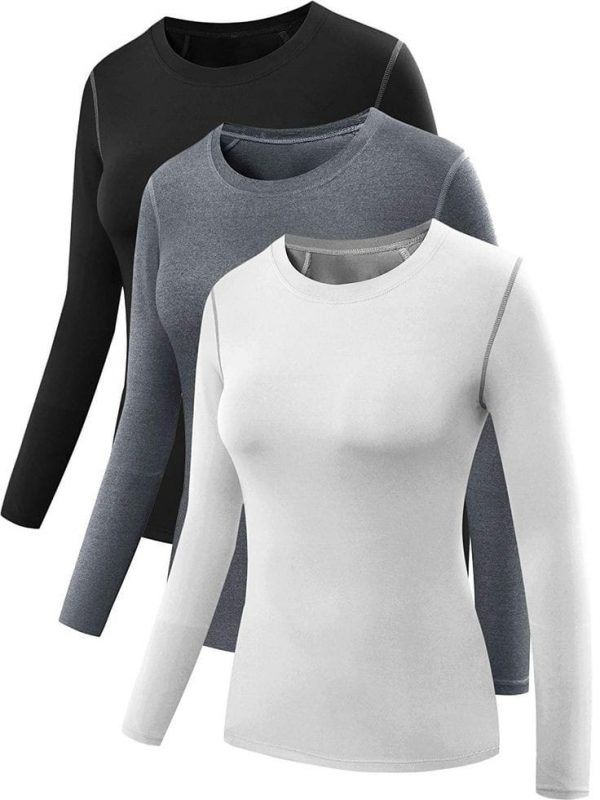
Making the most of your exercise time is crucial because life may get busy. You can improve your performance by donning the proper women’s compression long sleeve.
Compression socks and shirts can help stabilize. An also supports your body parts while you exercise.
The compression clothing will exert more pressure on your muscles during activity. This will help to lessen some of the tension.
As you exercise, this pressure promotes blood circulation, which improves the healing process.
Although tight, women’s compression long sleeve are breathable. Many designs of compression garments are to ease airflow. This keeps the wearer cool while exercising.
According to research, wearing compression clothing helps reduce fatigue and muscular discomfort. This effect lasts long after your exercises.
It occurs not just when you wear them while exercising. As a result, you will be able to work better for a longer period.
Additionally, wearing compression clothing might stop or postpone the onset of muscular discomfort.
Wearing compression clothing accelerates muscle recovery after working out. These clothing items boost blood pressure and lessen muscle tiredness.
This is beneficial for repairing torn muscle tissue and regrowing muscles. Also, the tightness of these items helps reduce edema more quickly.
Stretchability is one of the most noticeable characteristics of women’s compression long sleeve.
Stretching, lifting, and extending are just a few of the many distinct actions. Compression apparel is the ideal option.
It supports you while you do all those movements and won’t slow you down.
Some people can find it comfortable to work out while wearing loose, baggy clothing. Wearing these kinds of loose garments, yet, could be risky.
The flexibility of the gear allows you to work out effectively and safely. You can do it by donning tighter garments.
Wearing comfy attire might make doing out more fun. Working out is a fantastic opportunity to unwind.
Your skin will experience pressure if you wear compression garments. You will feel the pressure in your thigh and lower region.
Your clothing won’t ride up as a result of your body movement during the exercise. These clothes are also less abrasive than conventional athletic wear.
Tank tops are compression clothing. They are typically made of fabrics linked to polyester or nylon.
This aids in your ability to dry off more quickly after perspiring. These garments cannot repel water. They can raise water out of the fabric.
This draws the sweat to the surface where it can evaporate. You can identify with the unpleasant sensation of your perspiration covering you.
This makes it challenging to move. Your perspiration even lessens the ability of cotton garments to compress.
You should wear compression gear and stay dry when you visit the gym because of this.
Wearing a women’s compression long sleeve could improve your athletic performance. Consider compression shorts as an illustration; they can help athletes jump higher.
Even after a rigorous workout, athletes can recover their best jumping performance. You can do it by donning compression shorts.
Low perceived exertion indicates that a workout requires less effort. You will appreciate the value of low perceived exertion.
If you enjoy endurance events or extreme sports. Previous research has shown that compression clothing improves the perception of exertion.
And also makes training or exercise more tolerable for endurance runners.
Nearly everyone in this modern era has a social media account. Beautiful sportswear is essential.
Since many people enjoy posting pictures of themselves playing sports on social media. For people who wish to flaunt their figure, compression clothing is fantastic.
Compression garments can assist in defining muscles in people. Knee-length shorts are a good option.
They suit people who prefer to deadlift and squat since they better display their bodies. Many ladies like compression or yoga pants.
Because they provide a good definition for the butt, thighs, and calves. This is an excellent approach to keeping tabs on your development.
Choosing the Correct Fit for Compression Wear
Your compression apparel must fit properly to be effective. Discover the qualities to look for when purchasing compression sleeves.
The fit of compression clothing has a distinctive identity. This sets it apart from other activewear and daily clothing.
The pressure that compression applies to your muscles may feel strange to you at first. Additionally, you could be unclear about your size and question if it’s too little or if you should order a size up.
The compression clothing should fit snugly to provide compressive pressure on your muscles. Your body should feel snug and form-fitting while still having a full range of motion.
Pressure Level Variations in Compression Wear The level of compression in each type of compression clothing varies.
The majority of athletic clothing does not have a level of compression. Popular compression gear often has levels between 15 and 30 mmHg.
The greater the amount of mmHg, the greater the compression of the garment. And the greater the pressure.
A Guide to choosing the correct size for compression clothing brand depends on conventional garment size, like regular clothes.
Take the extra step of collecting your precise measurements before purchasing. Then, you can compare your dimensions to the brand’s sizing chart.
For proper sizing of your compression garment, take the following measurements:
Compression top measurements: Measure around the area of your chest (or bust) that is the fullest. Measure about the area of your natural waist, which is above your hips.
Hips: Measure the area that is the fullest.
Compression Bottoms Measurement: Measure the area of your natural waist, which is above your hips.
Inside Measure the length of your inner leg from top to bottom. Measure the inseam of your clothing from the crotch seam to the bottom of the leg.
Your measurements may put you between two sizes for compression gear. It’s usually advisable to go down.
The garments’ compressive pressure is essential to their effectiveness. So, you will lose out on many of its benefits if you choose compression clothing that is too big or loses fitting.
Runner in compression clothing. Runner in compression clothing. Once you’ve put on your compression clothing, test it out to make sure it fits properly.
Look for any locations where the cloth feels too loose or like it might be bunching. The fabric should cover your body and limbs in a snug, smooth fit that feels like a second skin.
Also keep in mind that while wearing the garment, you should be able to feel pressure. But it should never constrain your movement or make you uncomfortable. It is best to size up in this case.
The cloth used to make compression garments is also used to make compression sleeves. You may feel the same compression and pressure against your body with the sleeve on.
This can happen even though a sleeve does not fit the top or bottom the same way as your usual clothing.
Your compression sleeve should stay in a comfortable position throughout the activity. It should need a little change, that is an important feature to look for.
Be aware that compression sleeves are available in a wide range of styles. Arm, elbow, knee, and calf compression sleeves are some of the most popular types.
Compression sleeves also come in shoulder, wrist, finger, and ankle forms, among others.
Your compression sleeve should exert pressure while still being comfortable to wear. It is like any compression garment.
Wearing compression sleeves gives extra support and stability to a particular area. The sleeve should never restrict that area’s freedom of motion.
Conclusion
Compression sleeves have a tight, elasticized textile covering. It extends from the wrist to the shoulder.
To encourage lymph flow up the arm toward the upper arm and armpit lymph nodes, it is tighter at the bottom than the top.
Long Compression sleeves are necessary for many people to wear all the time. There are different types of sleeves day and night.
Daytime sleeves are more flexible and fitted more. The sleeves worn at night are larger and have cushions or foam inside. The wearer may be able to tighten and relax the sleeve using straps on the exterior.
This post is written by Kosha team member – Ankita Sabat
